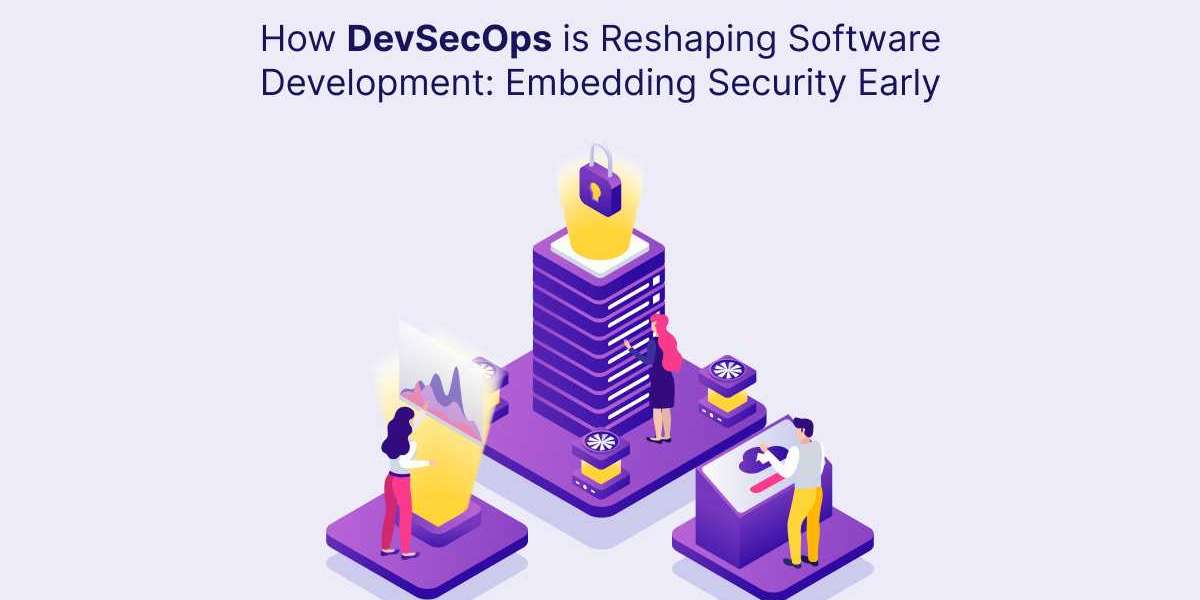In the fast-evolving world of software development, speed and agility are no longer enough. Modern businesses, especially B2B enterprises and SaaS providers, face rising threats that target applications and infrastructure at every layer. This makes security a critical priority from day one. One practice leading this change is DevSecOps. It is transforming how teams build, test, and deploy software by embedding security early in the development lifecycle.
DevSecOps, short for Development, Security, and Operations, focuses on breaking down traditional silos between development teams and security specialists. It ensures that security isn’t just an afterthought but a continuous and integrated part of software delivery. Combined with strong cloud security practices, DevSecOps helps organizations minimize risks while maintaining delivery speed.
Why Traditional Development Models Are No Longer Enough
Historically, software development followed a linear process where security checks happened only at the final stages. This reactive model created several challenges:
- Late discovery of vulnerabilities
- Costly remediation efforts
- Delayed product releases
- Poor coordination between development and security teams
As applications moved to cloud-based environments, the risks grew. The need for proactive cloud security measures became evident. DevSecOps emerged as the solution to bridge this gap.
How DevSecOps Embeds Security Early in the Development Cycle
DevSecOps changes the traditional development approach by shifting security to the left—meaning security tasks start early in the development process and continue throughout.
Secure Coding Practices from Day One
Developers working in DevSecOps environments receive training in secure coding best practices. They’re equipped with tools that help identify vulnerabilities in real-time.
Common secure coding initiatives include:
- Static code analysis during development
- Real-time vulnerability alerts in Integrated Development Environments (IDEs)
- Peer code reviews focused on security issues
By promoting secure coding standards, teams reduce the chances of vulnerabilities making it into production.
Continuous Cloud Security Testing
With most applications now hosted in the cloud, maintaining strong cloud security becomes non-negotiable.
DevSecOps integrates automated security testing within Continuous Integration and Continuous Deployment (CI/CD) pipelines.
This includes:
- Static Application Security Testing (SAST)
- Dynamic Application Security Testing (DAST)
- Infrastructure as Code (IaC) scanning for misconfigurations
- Container security assessments
Automated testing ensures that both application code and cloud infrastructure meet security standards at every deployment stage.
Security as Code
A key DevSecOps principle is treating security policies as code. This allows security rules to be version-controlled, tested, and deployed like any other application component.
Benefits for cloud security include:
- Consistent policy enforcement across multiple cloud environments
- Reduced manual errors
- Faster response to emerging threats
This approach helps development teams manage complex cloud security configurations efficiently.
The Role of Automation in DevSecOps and Cloud Security
Automation is central to making DevSecOps scalable and effective for fast-moving development teams.
Examples of security automation in DevSecOps:
- Automatic vulnerability scans triggered by code commits
- Cloud resource monitoring tools that detect misconfigurations
- Automated remediation scripts for known security issues
- Continuous compliance checks against cloud security benchmarks
By automating repetitive security tasks, teams can focus on delivering new features without compromising security posture.
Benefits of DevSecOps for Cloud-Native Application Development
For organizations building applications in cloud environments, DevSecOps delivers several critical advantages:
Reduced Risk of Cloud Breaches
With continuous monitoring and proactive threat detection, DevSecOps strengthens cloud security at both the infrastructure and application levels.
This helps prevent:
- Unauthorized access
- Data breaches
- Configuration drift in cloud services
Faster Time-to-Market
DevSecOps reduces delays caused by last-minute security issues. By embedding cloud security checks early, development teams can deploy faster and with greater confidence.
Lower Remediation Costs
Fixing vulnerabilities during development is significantly cheaper than resolving issues in production. DevSecOps ensures that flaws are caught before they escalate.
Improved Compliance Readiness
For businesses in regulated industries, DevSecOps streamlines compliance efforts by automating policy enforcement and providing audit-ready documentation.
Common Tools Supporting DevSecOps and Cloud Security
Adopting DevSecOps requires the right combination of tools that integrate security into development workflows.
Popular tools include:
- Snyk for open-source vulnerability scanning
- OWASP ZAP for dynamic application security testing
- Terraform for Infrastructure as Code with built-in security checks
- AWS Security Hub and Microsoft Defender for cloud environment monitoring
- Jenkins and GitLab CI for CI/CD pipeline automation
Choosing tools that align with your cloud security strategy is critical for DevSecOps success.
Read More: Scalable IT Solutions with Expert DevOps and Cloud Consulting Services
Best Practices for Integrating DevSecOps and Cloud Security
To maximize the benefits of DevSecOps in cloud application development:
- Train development teams on secure coding and cloud security fundamentals
- Automate as many security checks as possible within CI/CD pipelines
- Use Infrastructure as Code to manage and secure cloud resources
- Implement continuous monitoring for real-time threat detection
- Foster a culture of shared responsibility for security across all teams
Gradual adoption with measurable milestones helps teams track progress and demonstrate business value.
FAQs
How does DevSecOps improve cloud security?
DevSecOps integrates automated security checks, vulnerability scanning, and continuous monitoring directly into development workflows, ensuring that cloud security is maintained from development to deployment.
What are the key components of DevSecOps for cloud applications?
Core components include secure coding practices, automated testing tools, policy-as-code frameworks, infrastructure scanning, and real-time threat monitoring for cloud resources.
Is DevSecOps suitable for multi-cloud environments?
Yes, DevSecOps practices can be applied across AWS, Azure, Google Cloud, and hybrid cloud setups by leveraging cross-platform security tools and Infrastructure as Code.
How does automation in DevSecOps support compliance?
Automation helps enforce cloud security policies consistently, track changes, and generate audit reports, making it easier to meet industry-specific compliance standards.
What challenges do businesses face when implementing DevSecOps?
Common challenges include resistance to cultural change, lack of cloud security expertise, tool integration issues, and managing false positives in automated scans.
Conclusion
DevSecOps is reshaping software development by embedding security early and making it a continuous part of the development process. For businesses operating in cloud environments, this approach strengthens cloud security, accelerates delivery cycles, and ensures compliance readiness. By partnering with an experienced app development company, organizations can build scalable, secure, and compliant cloud applications that meet today’s business demands.







